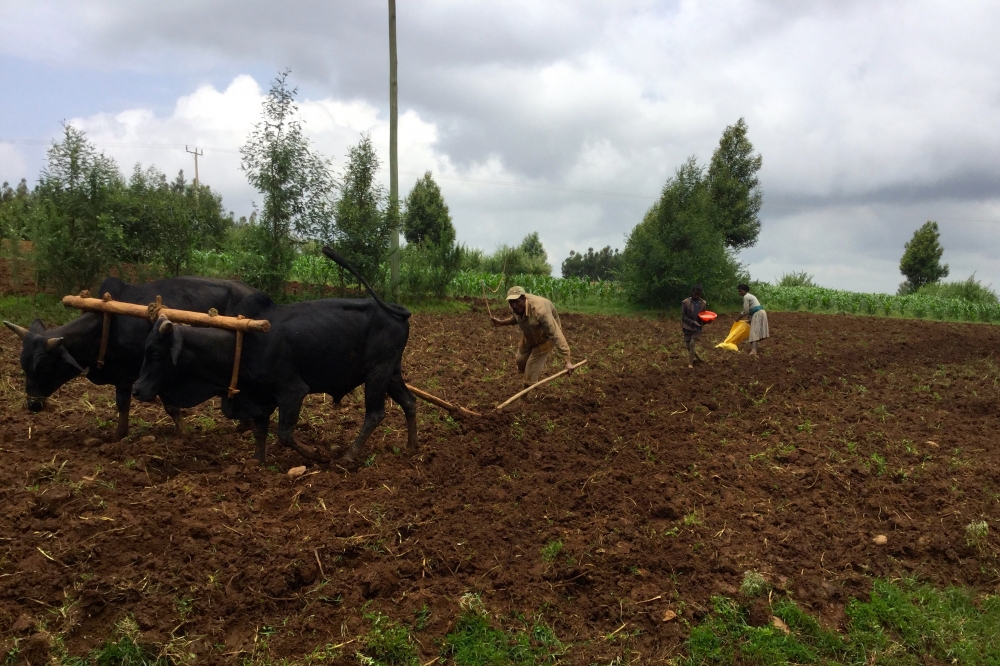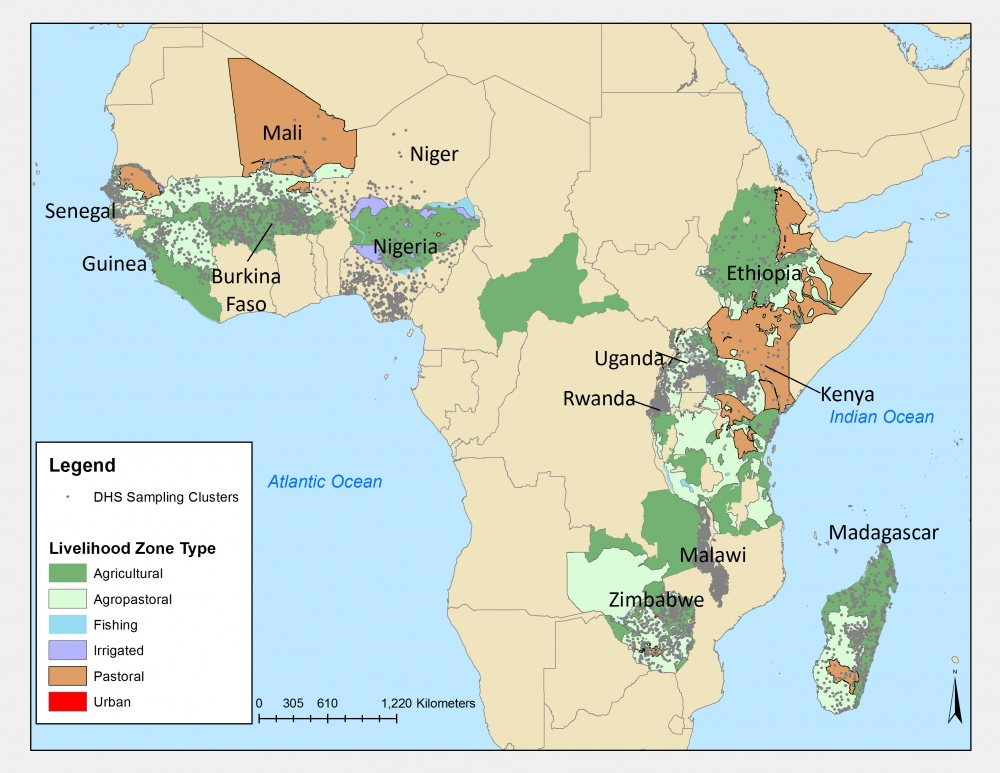Planning for the Future

Over the past decade, increasing temperatures across much of Africa and decreasing rainfall across East Africa have come to represent an alarming climate trend. Chief among concerns is the impact such conditions have on human health.
A team of scientists from UC Santa Barbara’s Climate Hazards Group (CHG), the University of Minnesota and the U.S. Geological Survey’s Early Warning and Environmental Monitoring Program are exploring potential links between these climate effects and two health outcome indicators: malnutrition and low birth weights. Their findings — some good news, some bad — appear in the journal Global Environmental Change.
Combining temperature and rainfall data from the CHG InfraRed Precipitation with Stations, a satellite-based rainfall monitoring network, with socioeconomic household-level data, the team modeled future scenarios of climate impacts on health outcomes in 13 countries in sub-Saharan Africa.
“Our models indicate that vulnerable areas continuing to get warmer and drier could see more malnourished children and lower birth weights,” said lead author Frank Davenport, a CHG researcher. “However, that scenario potentially could be mitigated by positive development trends such as access to electricity, clean water and education.”
Still, the analysis showed that the strong relationship between increased warming and increases in low birth weights might be harder to counter. “It’s almost certain that it is going to get warmer and that warming is going to have some pretty direct negative physical impacts that may not be huge but are nonetheless robust,” Davenport explained.
With regard to child malnutrition, the data revealed much bigger changes resulting from warming and drying, yet greater potential for alleviating childhood stunting — a measure of malnutrition — through positive development. In a number of African countries, 30 to 40 percent of children are affected by malnutrition.
“That percentage changes depending on where people live,” Davenport said. “We found the widest variation of results among what are called ‘pastoralists,’ for a couple of reasons. One is that pastoralists tend to be the most vulnerable and the most food-insecure and, because they live in hot, dry, remote areas and have to purchase a great deal of their food, they have limited resources to fall back on in times of adversity. Second, pastoralists often are nomads who graze their herds over extended territories, so they’re notoriously difficult to sample in household surveys, where we get much of our socioeconomic data, so they tend to be underrepresented.”
Along with two previous, related papers, this research demonstrates that climate effects carry the same weight as economic indicators — showing that climate can have first-order effects on nutrition and health. Potential scenarios suggest increased wealth and better education can offset these effects. “The good news is that we can build up the resilience and the livelihoods of these populations,” said USGS Early Warning and Environmental Monitoring Program scientist Chris Funk.
CHG researcher and co-author Shraddhanand Shukla pointed out that despite the potential for long-term positive changes, setbacks such as drought or conflict can make situations worse. “The issue is that even as an entire country gets better, there are certain very vulnerable populations that tend to get marginalized or left behind,” he said. “We’re trying to model fairly complex social phenomena based on assumptions about what might happen in the future. So, no matter what, there’s still a lot we don’t know.”
The researchers’ ultimate goal is to provide useful information to guide interventions and resilience-building activities of aid agencies. “Even though some of our findings are disturbing, I think there’s a lot about this work that is hopeful,” Funk said.





